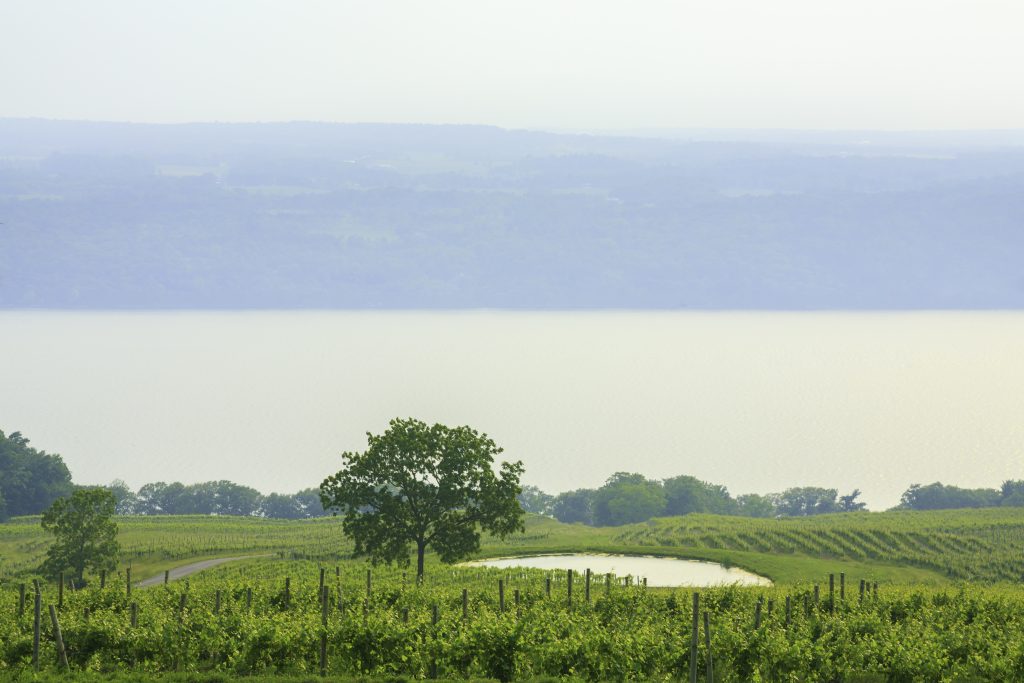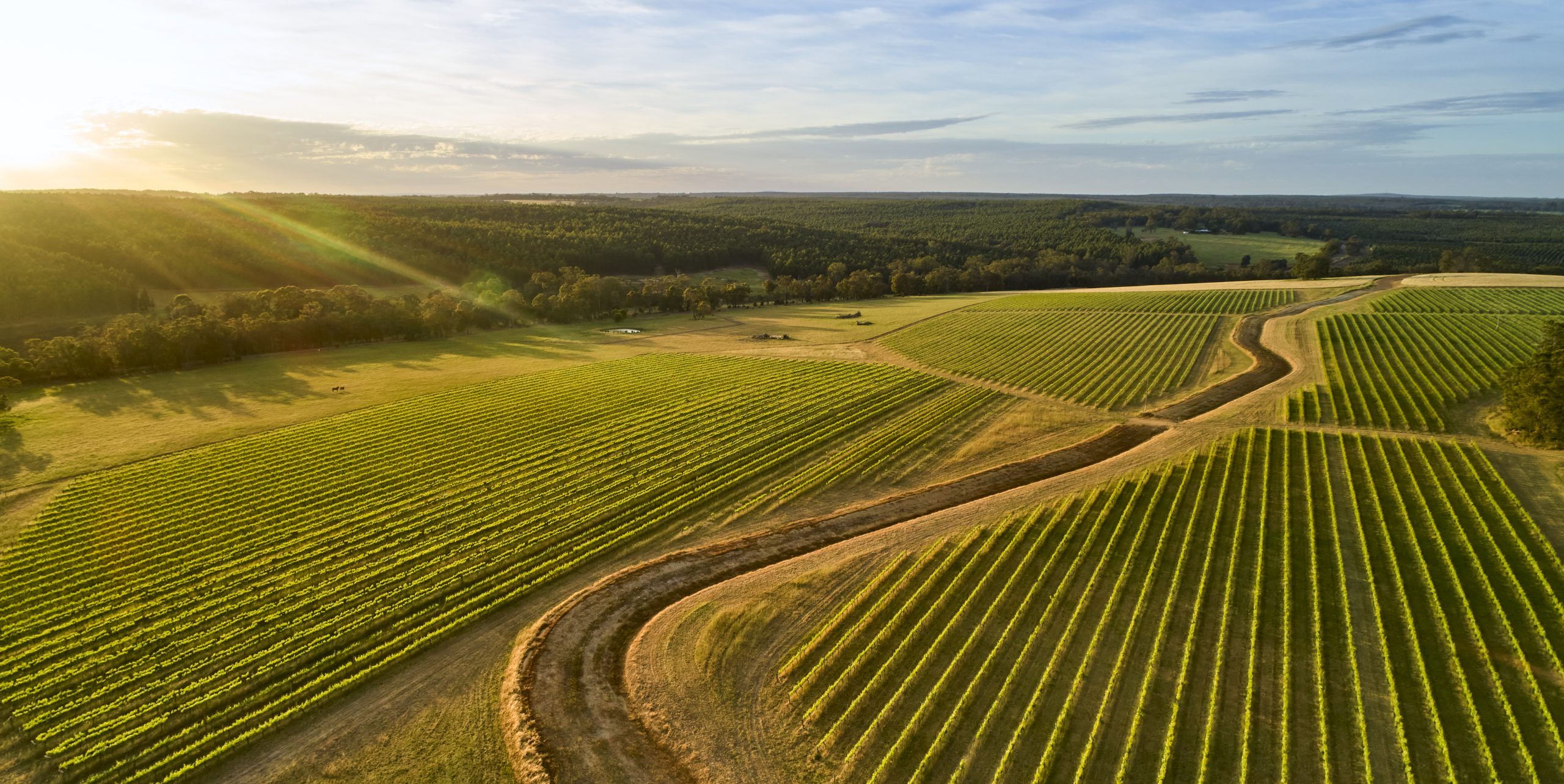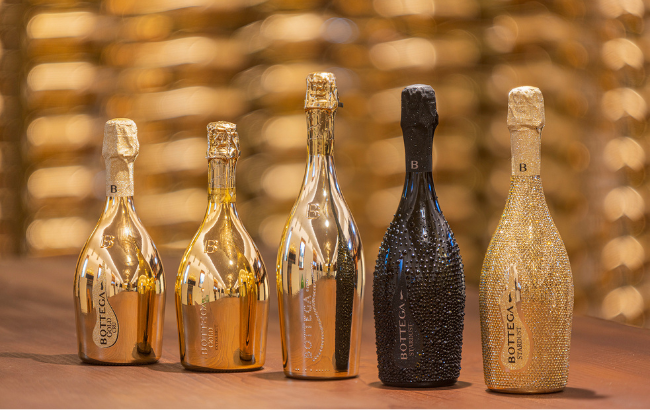Why world-class winemakers are headed for the Finger Lakes
By Kathleen WillcoxFor decades, Napa was the promised land for ambitious vintners eager to make a mark in the wine industry. But in recent years, a number of factors are sending winemakers to one of the most quietly beloved but stubbornly under-the-radar regions in the country: the Finger Lakes.

Establishing a winery in Napa is now really only possible for the rich. Prime vineyard land alone runs between $300,000 and $400,000+ per acre in the Napa Valley, according to a cost assessment study conducted by UC Davis – and that’s just the land, without considering the costs of labor, the building out of a winery, or the purchase of any of the tools needed to farm, ferment, age and produce a single bottle of wine.
In contrast, planting a vineyard and bringing it to production in the Finger Lakes, requires about $43,443, all in per acre, a study by Cornell University found. This simple maths pushed wife and husband duo Ria D’Aversa and Michael Penn to put down a stake in the Finger Lakes with Ria’s Wines in 2022.
Prior to discovering Finger Lakes, Penn was the head winemaker at Green and Red Vineyard in Napa, while D’Aversa managed Constellation Brands’ Napa vineyard, and the duo had also launched their own passion project, Pennrose. On paper, everything was rosy.
“We both had really exciting jobs and were moving upwards in our career,” D’Aversa said. But doing business there, where “the market was full of incredible growers and winemakers, it was hard to stand out. We also wanted to find a place that had a high quality of life.”
The pair discovered the Finger Lakes after a brief stopover in Long Island, finding a “sense of community” there as well, D’Aversa said – something that was important for a growing family. “We had our second daughter here in the Finger Lakes, and were also able to purchase a home for the first time.”
They now have 21 acres (8.5ha) of grapes across two farms as well as three growers to source from, and on target to produce 3,000 cases this year, with plans to increase this to 5,000 by 2026.
The cost of doing business and the desire to make an impact in the Finger Lakes also compelled Nova Cadamatre, the first female winemaker to achieve her MW in the US, to move east. Cadamatre established Trestle Thirty One in 2015, and sources grapes from four growers around Seneca, Cayuga and Keuka. In 2022, she joined Neverstill Wines in the Finger Lakes as winemaker, managing a 10-acre vineyard on Seneca for Neverstill and acquiring 12 acres on Seneca, which has not yet been planted.
“You’re looking at $30,000 per planted acre of vinifera versus $500,000 or more in Napa,” Cadamatre notes. “That is one of the main reasons we started our wine business here. I also felt I could add something to the region. I wanted to help move it forward.”
For Paul Hobbs, “the Steve Jobs of wine”, according to Forbes, establishing a footprint in the Finger Lakes was not a matter of financial necessity – he already had a total of seven wineries around the world – but it did seem practical (even if Hobbs went about planting the vineyard in a manner that effectively eliminated the Finger Lakes financial advantage).
“People definitely thought we had a few screws loose,” Hobbs says of his 2013 decision to plant the vineyard in a rain shadow at the southern edge of Seneca Lake, which became Hillick & Hobbs Estate. He likens the exposed slate and shale soils, steep slopes and aspect of the vineyard to classic terroir in the Mosel region. The vineyard is planted at high density, perpendicular to the lake, in opposition to the classic Finger Lakes convention of wide spacing and plantings parallel to the lake, which makes the process of farming more practical and cost-effective.
“We have air and water drainage, and I knew this site would grow Riesling that would be up to the level that I wanted to make,” Hobbs says. “People understandably wondered how we would turn a profit after making such a large investment, but so far the sales have exceeded our expectations. It’s not saturated the way it is in California, it’s close to major markets like New York and Boston, the setting is as good as it gets and as long as you don’t do it the way we did, the startup costs are minimal.”
The Changing Climate
Cost is one thing but climate change is drastically affecting wineries in Napa and the surrounding area, providing another element to push vintners east.
Between slathering sunscreen on grapes, harvesting grapes a month earlier than usual, planting heat-resistant Portuguese, Italian, Spanish and Greek grape varietals that most Americans haven’t heard of, and reeling from billions of dollars in damage from wildfires, few vintners stride into the California summer with the confident nonchalance that was the norm just a decade ago.
That’s not to say that the Finger Lakes comes without climate change challenges itself — humidity, early bud break followed by frost and increased pest pressures are just a few— but it is nowhere near to the blood pressure spiking stress of farming in California. If anything, climate change is helping boost the overall quality of the wines there.
Cadamatre has observed improvements in the grape quality herself.
“We are seeing higher growing degree days throughout the season,” she says. “The ripeness is getting better and better as this happens so it is not so hit and miss as far as good quality from vintage to vintage.”
However, as the earlier bud break in the Finger Lakes has increased the risk of frost damage, she predicts growers will continue to invest in frost protection to ward off that threat.
Partner Content
A Shift in Tastes and Desires
The region is also benefiting from the Zeitgeist as more people want the kinds of wines the Finger Lakes excel at these days: lower in alcohol, bright and light.
Riesling has long been the region’s flagship variety, which happens to suit the world’s preference for zippy whites over the opulent reds that ruled the planet’s palate for so long, and still dominate plantings in Napa.
White wine accounts for about 50.5% of the total volume of table wine in the US, registering an uptick in sales value of 0.3%, according to market research firm NIQ. That may not seem like a lot, but compared to red wines’ decline of 6.6%, it is notable.
“One of the beautiful things about Riesling is that it ripens completely at low alcohol levels,” Hobbs says. “It is clean, crisp and refreshing. Stylistically, it’s what people want, because it is also complex and concentrated, so you get the low alcohol without being thin and simple. You can really bite into it.”
Cadamatre concurs, adding that the Finger Lakes delivers lower alcohol and food friendly wines across the board, red and white.
“Many of the red and white hybrid varieties being grown here also require fewer inputs in the vineyard, so from a sustainability perspective, which is also important, these fit in well,” she says.
Funding and the Future
In addition to being “the best place in America to grow Riesling” and one of the most eco-friendly and cost-effective places to plant a vineyard, D’Aversa notes that the grants and educational resources offered by the New York Wine & Grape Foundation, the USDA’s New York chapter and other local state-funded farming organizations is leagues ahead of other regions.
The New York Wine & Grape Foundation publishes a grant guide for its members detailing every opportunity available for funding farming and production projects, it provides free or low-cost educational webinars, provides subsidies on Farm Credit East Benchmark services and helps provide programs to analyse wines through Cornell and boost any brand’s export program.
D’Aversa notes that she has found earning grants and finding resources in New York much “easier and more convenient” than California.
“The Finger Lakes is emerging as a beacon for winemakers seeking both opportunity and inspiration,” agrees Samuel Filler, executive director at the New York Wine & Grape Foundation. “With its accessible startup costs, unparalleled terroir and a community that embraces innovation and collaboration, it’s no wonder that respected winemakers are choosing this region to craft their legacies.”
Napa winemakers, meanwhile, are taking the county to federal court and speaking out over what they see as a concerted effort to prevent them from doing business.
It is perhaps unsurprising that D’Aversa predicts the influx of talented winemakers will continue.
“We’ve been so happy to see other people moving,” she says. “Our friends Alex and Julie moved from the Bay Area here and now operate Usonia Wine. Christina Zapel moved from Sonoma to become the winemaker at Red Newt Cellars. Janelle and Tim, who work at Forge Cellars, moved from Santa Rosa, just like we did. We get calls and messages all the time from friends out west who are curious about life here and what it would take to move.”
The first vineyard in the Finger Lakes was planted by Reverend William Botswick in 1829, and the region has yet to have its Judgment of Paris moment. It may never do so, but according to Cadamatre, the region has “massive untapped potential”.
“I think greater investment is going to happen over the next decade, and we’ll see some fast movement forward to rapidly build on the slow burn of the last few decades,” she said.
We’ll be sipping along.
Related news
Should Rioja increase its focus on white wine?
US wine bodies lobby Congress for answers
Why Thatchers Cider is so focused on the natural environment




